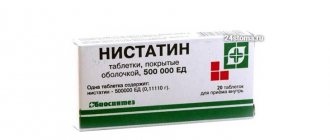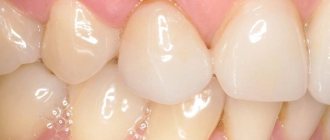Gynecology doctors understand the word “thrush” as a specific disease of the female body. This type of ailment often manifests itself during pregnancy, usually in its early stages. Thrush in pregnant women occurs in more than 82 percent of cases, according to international statistics. But, nevertheless, it does not in any way threaten the pre- and postpartum condition of the mother. However, if you do not promptly puzzle yourself with the issue of its prevention, you can get a number of complications.
If we talk about the symptoms of thrush, we can distinguish the following components:
Swelling of the external and internal genital organs, most often the external ones.
Discharge in the form of a “curd consistency” from the vagina, having a sour odor.
Unpleasant itching, which occurs when taking a shower and resting at night, in the area of the outer labia.
Why does the disease occur in pregnant women?
Thrush or vulvovaginal candidiasis is an infectious disease caused by yeast-like fungi of the genus Candida. These microorganisms can be present in small quantities in the vagina and colon of an absolutely healthy woman. However, under certain conditions, an active increase in their numbers is observed, which is accompanied by inflammation.
Why are pregnant women at increased risk of developing thrush?
The thing is that during pregnancy the vaginal microflora changes: the number of lactobacilli in it decreases. Lactobacilli are necessary to maintain normal vaginal pH levels and suppress the growth of pathogenic microorganisms, including Candida fungi.
As long as a balance is maintained between the beneficial and pathogenic “inhabitants” of the vaginal microflora, the woman does not feel any discomfort. When the number of lactobacilli decreases, candida begins to multiply rapidly, causing unpleasant symptoms.
The second reason for the appearance of thrush in pregnant women is a decrease in immunity, which is a necessary condition for normal gestation. During gestation, special substances begin to be synthesized in the female body. Their primary task is to prevent the formation of antibodies that can cause the mother’s immune system to reject fetal cells.
Additional provocateurs for the development of thrush include:
- improper intimate hygiene. If, while taking a shower, a woman directs a stream of water from the anus to the pubis, this promotes the entry of intestinal microflora into the vagina. As a result, the physiological relationship between lactobacilli and pathogenic microbes is disrupted;
- chronic inflammatory processes, in which immunity is usually reduced;
- wearing synthetic underwear. Non-natural fabrics do not transmit oxygen well, which is necessary for lactobacilli to function normally;
- constant use of panty liners, which interfere with normal air circulation. When using pads in the vaginal area, the temperature rises and a moist environment is created. These are the most favorable conditions for candida reproduction;
- long-term use of antibacterial agents;
- hypothermia.
Contraindications and adverse reactions
Candide is not prescribed to cure thrush in patients with hypersensitivity to the components. The medicine is not suitable for women during menstruation and the first trimester of pregnancy. Nursing mothers can use Candide to combat thrush only with extreme caution, starting with small doses and observing the child’s reaction. Negative effects when using Candida occur extremely rarely, but patients may still experience local irritation, burning, itching or swelling of the mucous membrane. Patients reported headaches, increased vaginal discharge, and increased urination.
Read more about thrush on the website: etogribok.ru/
How is the disease treated during pregnancy?
The difficulty of treating thrush during pregnancy is that it is important to maintain a balance between the therapeutic effect and the safety of the fetus. In the first trimester of gestation, the formation of the internal organs of the embryo occurs, and the unborn child is not yet protected by the placenta. In this regard, only topical drugs are used that do not penetrate the systemic circulation. For example, based on natamycin. In the second and third trimesters of gestation, when most of the organs and systems of the fetus are already formed, the doctor may advise the use of a wider range of drugs.
During treatment, it is recommended to refuse intimacy or use barrier contraception during sexual intercourse.
When treating a disease, it is important to strictly adhere to the regimen prescribed by a specialist. If you do not follow it, there will be no therapeutic effect, and the disease may become chronic. It is much more difficult to cure chronic vulvovaginal candidiasis.
Online consultation with a gynecologist
Online consultation
During the consultation, you will be able to voice your problem, the doctor will clarify the situation, interpret the tests, answer your questions and give the necessary recommendations.
Some pregnant women use folk remedies to treat thrush. However, “grandmother’s” methods are not only ineffective, but can also be harmful. For example, douching with a soda solution can lead to the washing out of beneficial vaginal microflora.
Treatment of thrush during pregnancy
Treatment with many medications during pregnancy is contraindicated, therefore, if thrush occurs, treatment options should be discussed with the treating gynecologist. It is impossible not to treat the fungus. Thrush can spread to the throat, esophagus and intestines, leading to digestive problems.
Sometimes cases of thrush are severe enough that they cannot be cured with natural remedies alone. In this situation, the doctor, despite pregnancy, prescribes antifungal medications that regulate the level of Candida in the woman’s body.
It is important to note that pregnant women should not take fluconazole: some studies show that this drug causes birth defects. Most antifungal drugs that enter the mother’s blood have a negative effect on the fetus, so the doctor’s medication prescription is often aimed at local treatment (creams, suppositories).
But even vaginal products cannot be purchased without consulting a gynecologist.
Is the disease dangerous for the pregnant woman and the fetus?
Every expectant mother is concerned about the impact of thrush on her unborn child. And such worries are not in vain. Despite the fact that the disease in most cases does not harm the fetus, complications are still possible. In some situations, vulvovaginal candidiasis leads to the following consequences:
- fetal hypoxia;
- leakage of amniotic fluid;
- miscarriage, premature birth.
One of the most dangerous complications of thrush during pregnancy is infection of the fetus, which can occur both in the prenatal period and during delivery.
The likelihood of infection of the fetus increases before birth, when the protective cervical plug disappears. The entrance to the uterus opens, and infectious agents freely penetrate the organ, affecting the mucous membranes of the unborn baby.
The highest risk of infection occurs during the passage of the fetus through an infected birth canal. During delivery by cesarean section, infection of the child is also possible. Infection is especially dangerous for premature babies. These babies have a weakened immune system, and any infection is severe.
The disease can harm not only the unborn baby, but also the pregnant woman herself. In addition to unpleasant symptoms, candida can cause inflammatory processes in the pelvic organs. If the infection affects the urinary system, urethritis (inflammation of the urethra) and cystitis (inflammation of the bladder walls) may develop. After childbirth, many women experience candidal endometritis, in which inflammation of the inner mucous layer of the uterus occurs.
Why is Candide indispensable for thrush?
General information about the problem
First of all, you should understand what thrush is. In medicine, this disease is called candidal colpitis or candidiasis, which is caused by Candida fungi. Most often, representatives of the fair sex encounter thrush when a fungal infection affects the mucous layer of the vagina. The fungus is also localized in the oral cavity, especially in heavy smokers or patients with serious chronic pathologies or taking potent medications.
Candidiasis is often observed in children, then parents may observe a white coating on the tongue or the inside of the cheeks. It is extremely important to know in detail what thrush in the mouth of babies is, how else it manifests itself, and how it is dangerous for a small organism, because this is the only way to quickly overcome this disease and relieve the baby from discomfort in the mouth. And the effective drug “Candide” will help cure childhood candidiasis.
Composition and release forms
Manufacturers offer several types of Candida:
- vaginal tablets;
- a solution that is used as drops or spray;
- powder;
- gel;
- ointment.
“Candide” owes its popularity to the components present in its composition, which provide the drug with antifungal activity. The medicine is based on clotrimazole, a substance that has a detrimental effect on thrush pathogens. Contains "Candide" and other components:
- emulsion wax - makes the product hypoallergenic;
- liquid paraffin - moisturizes the dermis and prevents the appearance of microcracks;
- sodium phosphate - maintains mineral balance and acid-base balance in the blood.
It is advisable to use “Candide” for thrush in newborns in the form of a 1% solution. Women are prescribed vaginal tablets, and for men the drug is suitable in the form of a gel, used orally. Before treating problem areas with the pharmaceutical product “Candide”, you must consult a doctor and study the instructions for use.
Advantages and disadvantages
The advantages of Candida include:
- ease of use and the ability to carry out treatment at home;
- rapid elimination of manifested symptoms of candidiasis;
- low cost;
- low toxicity;
- variety of dosage forms;
- infrequent side effects.
The drug is often well tolerated and undesirable effects occur extremely rarely during therapy. High safety allows the use of “Candida” for newborns, as well as as a preventive measure for the proliferation of the Candida fungus. But, despite such significant advantages, the medicine has its disadvantages, the main ones being the following:
- The drug does not treat the cause of the disease, but only reduces the severity of symptoms. Therefore, it should be used in combination with other antifungal medications.
- Requires mandatory consultation with a doctor, since only he can determine the required form of medication.
What is the prevention of thrush?
It is impossible to completely protect yourself from thrush during pregnancy, but every woman can reduce the risk of the disease. To do this you need:
- observe the rules of intimate hygiene: take a shower regularly, wash in the right direction (from the pubis to the anus);
- wear loose underwear made from natural fabrics;
- Do not use panty liners 24 hours a day. It is also worth paying attention to their timely replacement;
- do not overcool;
- eat rationally, include foods enriched with vitamins and microelements in the menu.
Features of therapy
Instructions for use
Treatment for thrush should begin immediately after the diagnosis is made.
To get rid of candidiasis in a child’s mouth using Candida, you will need to take a cotton swab, drop 3-4 drops of solution on it and lubricate the affected areas of the mucous membrane. It is recommended to remove white plaque after feeding, three times a day. The baby’s mouth should be treated continuously for a week, but the first improvements are observed already on the 3rd day.
Vaginal tablets can cure thrush in women. To do this, you will need to lie on your back, bend your knees and insert the medicine deep into the vagina. The dosage is determined by the attending physician, but is usually 500 mg 1 time before bedtime. “Candide” in powder form is applied to the problem area of the skin 3-4 times a day. In order for the therapeutic course to give the most positive results, it is important to carry out procedures regularly and not stop treatment after the disappearance of painful symptoms.
Disease prevention
To protect herself from the appearance of thrush, the expectant mother should give preference to loose cotton underwear, monitor her diet, stop using panty liners frequently, worry less and devote more time to rest, undergo a gynecological examination in a timely manner and take a smear for analysis.
An important role is played by observing the rules of personal hygiene. You need to wash yourself daily using special products: for example, Ginocomfort washing gels. It contains lactic acid, which allows you to maintain the balance of microflora at an optimal level, as well as sodium lactate, tea tree oil, chamomile extract, panthenol and bisabolol. These active components promote gentle cleansing of the intimate area and have an antimicrobial and antiseptic effect.
Thrush during pregnancy in women
Sources:
- FEATURES OF PREGNANCY, CHILDREN AND THE POSTPARTUM PERIOD IN PREGNANT WOMEN WITH VULVOVAGINAL CANDIDIASIS. Kupert A.F., Akudovich N.V., Kupert M.A. // Siberian Medical Journal (Irkutsk). – 2008. – No. 6. – P. 27-29.
- PERINATAL OUTCOMES IN VULVOVAGINAL CANDIDOSIS. Akudovich N.V., Kupert A.F., Vetokhina A.V. // Acta Biomedica Scientifica. – 2004. – No. 2. – pp. 14-17.
- VULVOVAGINAL CANDIDIASIS AND PREGNANCY. Akudovich N.V., Kupert A.F. // Siberian Medical Journal (Irkutsk). – 2004. – P. 38-39.
- Pregnancy and vaginal candidiasis: current state of the problem (literature review). Karapetyan, T. E. // Gynecology. - 2008. - No. 2. - P. 4–8.
- Vulvovaginal candidiasis in pregnant women: modern approaches to treatment. A.K. Mirzabalaeva // Gynecology: a magazine for practical doctors. - 2005. - T. 7, No. 4. - P. 236–240.
- Vaginal candidiasis during pregnancy. O. A. Peresada [and others] // Medical news. - 2004. - No. 6. - P. 91–93.
Symptoms
There is a persistent misconception that thrush can be regarded as a sign of pregnancy in the early stages. However, this is incorrect. In fact, candidiasis does not occur in all expectant mothers, so it cannot be considered as a 100% sign of pregnancy.
Symptoms of candidiasis are as follows:
- White (less often yellowish) vaginal discharge, reminiscent of cottage cheese or cream and having a sour odor. Rarely, there is a thin, watery discharge with a sour odor.
- Redness and swelling of the vaginal mucosa caused by an inflammatory process.
- Vaginal itching, dryness and burning, most noticeable when urinating, during and after sex.
Popular questions
Thrush tormented me.
She was last treated in July. The doctor prescribed fluconazole tablets for me and my husband on days 1, 3, 7 and 10, one each, bactistatin, and Vaginorm suppositories. I inserted candles, but it seems to me that after them the process worsened. And here comes the itching and milky discharge again. Tell me, please, what should be treated? Previously, Pimafucin suppositories were prescribed during pregnancy. Hello! Considering the recurrent course of the disease, I recommend taking an analysis - culture for nonspecific microflora with determination of sensitivity to antibiotics. This will allow you to correctly prescribe the antifungal drug. And then it is necessary to carry out the stage of restoring the microflora and balancing the pH of the environment in the genital tract. For this purpose, Gynocomfort gel with tea tree oil is suitable, 1 dose once a day for up to 10 days.
I have constant relapses of thrush, which was not prescribed to me during these two months, and I took clotrimazole suppositories and a fluconazole tablet, even 2, then clindacin 6, but I took a smear, it did not go away, the only symptoms were a terrible severe burning sensation. They prescribed nystatin suppositories and tablets, but it was all useless. Now I have been prescribed pimafucin tablets and suppositories. Nothing helps, I even bought pharmaceutical lactacid, but I still have a burning sensation, help, I can’t do this anymore.
Hello! For properly planned therapy, it is necessary to know the sensitivity to antifungal drugs and the possible combination with other pathogenic microorganisms. You need to undergo a culture test for nonspecific microflora with determination of sensitivity to antibiotics and a PCR test for STIs. Next, carry out the stage of restoring the microflora of the genital tract.
Hello, I have a pressing problem, acute thrush has appeared, I can’t get to the doctor at the moment because... I’m in another city, and I have to leave in 10 days, I can’t stand it anymore, there’s terrible itching, curd-like discharge (yellow), it hurts to go to the toilet. Yesterday I bought a Flucostat tablet, took it at night, in the morning it doesn’t hurt to go to the toilet, the discharge has decreased a little, but the itching torments with the same intensity, and the labia are swollen. They suggested that I could use pimafucin suppositories. Tell me what to do?
Hello! You can use your remedy, and upon return, be sure to conduct examinations and consult a doctor.
I had thrush, took fluconazole and took a course of candidum b6, to restore the flora I use gynocomfort tea tree, can it be combined with acylact, or are they the same thing? How many days after the recovery course can the tank be cultured?
Hello!
It is possible to combine these products, since Gynocomfort gel with tea tree oil provides an optimal pH environment in the genital tract and contains lactic acid, and the suppositories contain lactobacilli. Cultures are taken 3-4 days after completion of treatment or after the next menstruation. For an accurate diagnosis, contact a specialist










